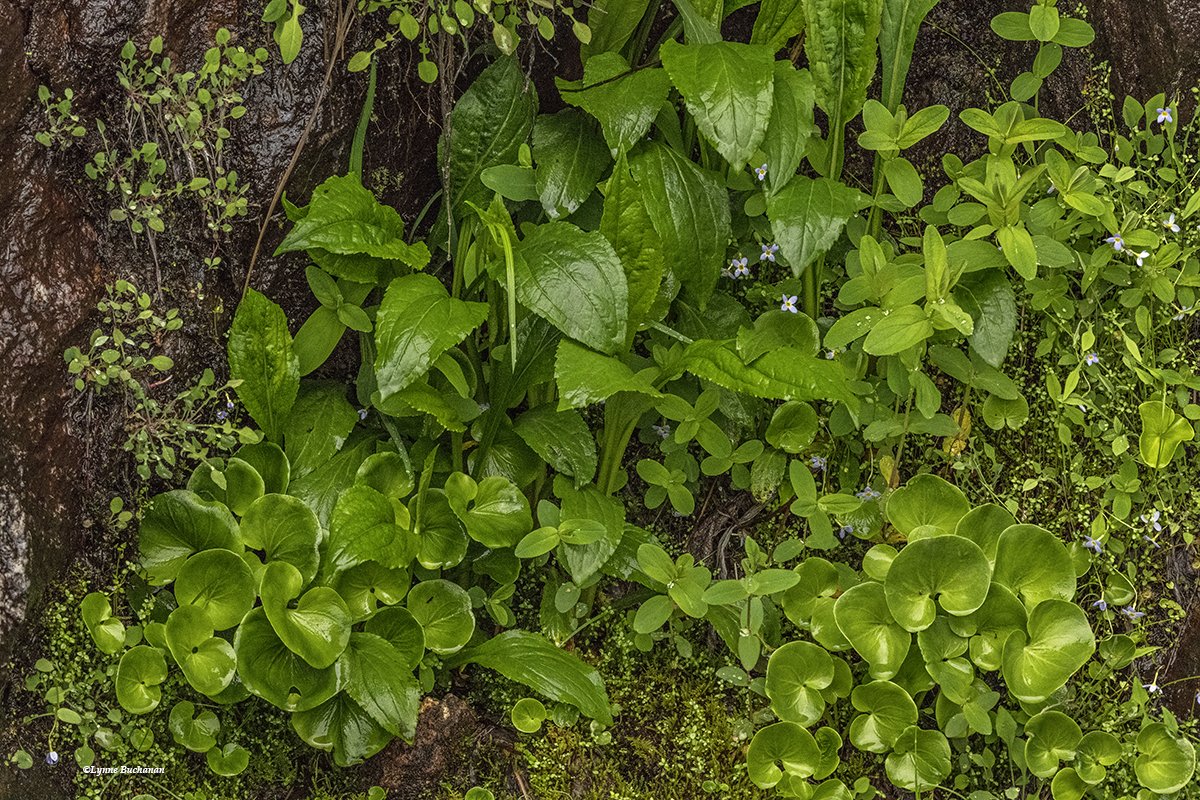The Incredible Biodiversity of a Vertical Bog along the Blue Ridge Parkway
Vertical Bog with Grass of Parnassus
A couple of weeks ago I visited this amazing vertical bog along the Blue Ridge Parkway across from the Wolf Mountain Overlook. May was the wettest month in recorded history in Asheville, so the bog was very moist and rife with life. There are many rock faces along the entire length of the Blue Ridge Parkway and many have modest amounts of plants and mosses, while this one is chock full of plants, grasses, mosses, and even sundews.
Water Droplets Clinging to Sundews
There were several areas in crevices with tiny sundews, which are tiny carnivorous plants.
Bluets and Mosses on a Vertical Bog along the Blue Ridge Parkway
The wildflowers and mosses were abundant. Why this bog has so many more types of plants and in such a higher density is a bit of a mystery.
Vertical Bog with Grass of Parnassus, Bluets and Moss
The leaves on the far left are of the Grass of Parnassus, which doesn't bloom until later. The leaves themselves are quite spectacular.
Vertical Bog with Ferns and Grass of Parnassus
Anywhere they can find to take purchase in the rocks, the ferns, grasses and wildflowers find a way o grow.
Vertical Bog with Moss, Grasses, and Azaleas
Even large shrubs and trees find ways to grow on the rock, watered by rivulets that also carve the escarpments.
Vertical Bog with Plants and Intrusions
Though this bog is almost overwhelming in its beauty, sadly we may be one of the last generations to see it in all its diversity. Native plants in the Blue Ridge are quite vulnerable to the effects of climate change due to reductions in snow melt and warmer temperatures, and acid rain poses a large threat as well.
Shell Pink Azaleas Adjacent to the Vertical Bog
The Blue Ridge and one area in China boasts the most biodiversity of all temperate zones. The more I hike and visit different spots along the Blue Ridge, the more I appreciate all the abundant life forms that exist here. Yet, I am also saddened to think that our lack of stewardship will cause this diversity to diminish. Not only is it incredibly beautiful to witness, such diversity also keeps our planet healthier.
Vertical Bog from Ground Level Up









